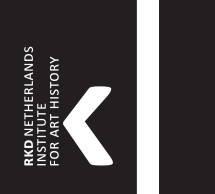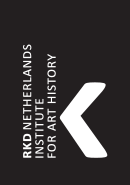4.5 Reyer Claesz.: Not an Artist but a Merchant
The identification of Rombout van Uylenburgh as the principal artist of the Van Eeghen tekenboek yields a probable match for the ‘Reyer Claassoon’ mentioned on its front cover. He was presumably the Amsterdam Mennonite merchant Reyer Claesz. (1577-1638), who resided in Danzig from 1608 to 1618, serving as a representative of a number of Amsterdam’s Mennonite firms.1 Because the Uylenburghs also belonged to this circle, Reyer will certainly have been in touch with them. In addition he was related to them,2 something that is quite remarkably also true of the current owner. That the drawing book probably always remained within the family may explain its relative obscurity.
It is conceivable that Reyer Claesz. took the album back to Amsterdam in 1618, on his return from Danzig. Given the similarities between the drawings and the five newly discovered grisailles, a dating to the first half of the 1610s is plausible. The inventory that was compiled at the time of Reyer’s death in 1638, mentions a ‘book of quality paper and that full of loose prints’ (boeck van schoonpapier en dat vol losse printen).3 The ‘schoonpapier’ probably alludes to the use of paper of exceptional quality, as art books were often made up of cheaper ‘grey paper’ (grauw papier). What makes the identification less convincing is that if the book had been used as a collection album, one would expect significant signs of wear. However, the Van Eeghen tekenboek happens to be exceptionally well preserved. The inventory also mentions ‘five small grey paintings with ebony frames’ (5 grauwe schilderijtgens met ebbe lijsten), unfortunately without specifying artist, subject matter or dimensions. They could also be the panels from Ons' Lieve Heer op Solder, be it coming from Hendrick Uylenburgh (e.g. as remainder of the series of eight mentioned in 1627), or imported from Danzig by himself.
The function of the drawing book remains a mystery. The drawings of biblical themes are more likely to be copies after existing compositions than preliminary studies. Their quality is uneven, and in general below that of the grisailles. Part of them may have been made by one or more apprentices or anonymous collaborators in Rombout’s workshop. Possibly the series served as a record of paintings by Rombout (and other masters?) which were intended for the art trade, but in this case it is strange that the image of three figures by a tree is not worked out and that most of the sheets were left blank. The remaining depictions were presumably introduced after Reyer’s return to Amsterdam. The painter Lambert Jacobsz., who was also a Mennonite and to whom two of the drawings are now attributed, worked for the Uylenburgh firm after 1625.4 As we have seen, the four still anonymous landscapes probably date from around 1630.
Rombout and Reyer probably became acquainted in 1612, when the artist relocated from Cracow to Danzig. If the drawing book was assembled for the latter, that must have happened subsequent to that year. However, the sloppy placement of the text to the right of center of the front cover of the drawing book could indicate that the letters were not applied until after the volume was bound, with the consequence that the cover could not be inserted far enough into the printing press. If Reyer Claesz. took over a largely blank drawing book by Rombout in which to preserve works on paper (along the lines of the ‘boeck’ mentioned in the inventory), the drawings were not commissioned by him and may have originated over a longer period of time, explaining the variations in style and quality.
The similarities of Rombout’s figures and compositions with the style of the Utrecht mannerists and the Pre-Rembrandtists may stem from an as yet unknown apprenticeship in the Netherlands, but it could also convincingly be explained by common sources of inspiration: prints after Joachim Wtewatel and Abraham Bloemaert for the mannerist landscape elements, and prints by Albrecht Dürer, Lucas van Leyden and Hendrick Goltzius for his religious compositions and architectural backgrounds. The figures in Pre-Rembandtist paintings are tributary to Italians like Raphael, Caravaggio and Jacopo Bassano. Rombout may have studied prints after these masters or he may have been apprenticed by a local artist who worked in Italy, like Anton Möller, who worked in Danzig from 1587 until his death in 1611.
Possibly the identification of more specific sources for the compositions rendered by Rombout Uylenburgh and his workshop will eventually shed more light on the history of the drawing book. In any case, the 20 new attributions to Rombout put forward here bridge the gap between the two already known drawings by him and the grisailles in the Rembrandthuis.

Reyer Claesz. (merchant) and studio of Rombout Uylenburgh and Jacob Adriaensz. Backer and Master of the Van Eeghen Drawing Book and Meesters van het Van Eeghen Tekenboek
Drawing book from the first half of the 17th century; size of the binding: c. 435 x 285 mm; on front cover: KONST BOECK VOOR / REYER CLAESSOON; content: 100 sheets of 425 x 278 mm. = 50 fol., folded once, in 25 quires of 2 sheets, of which each inner one is washed with blue at both sides; watermark: crosier in crowned shield., c. 1600-1635
Private collection
Notes
1 This conclusion was already drawn by the owner in 2007.
2 Lammertse/Van der Veen 2006, pp. 40-41.
3 Municipal Archives Amsterdam, notary J. Cornelisz. Hoogeboom, NA 840, dated 10-11 December 1638; excerpted in The Montias Database of 17th Century Dutch Art Inventories: http://research.frick.org/montias/browserecord.php?-action=browse&-recid=1673
4 Jacobsz. settled in Leeuwarden around 1620 but maintained regular contacts with Amsterdam through his work for the Uylenburghs. Bakker 2008, p. 3, n. 4.

